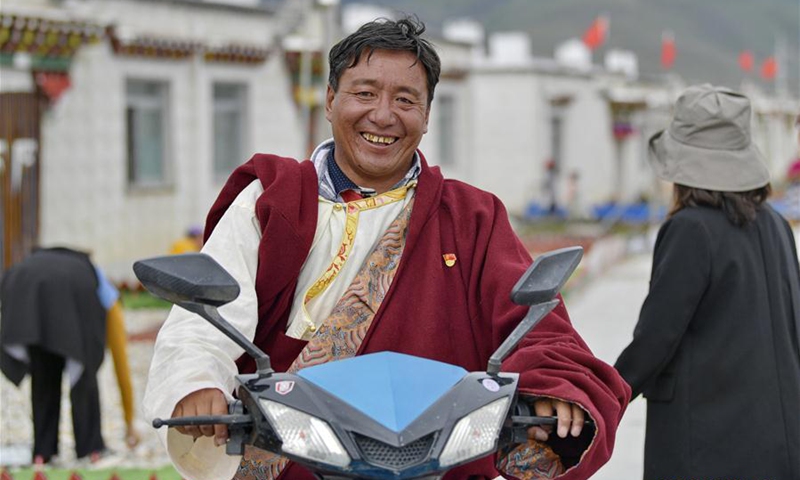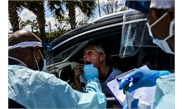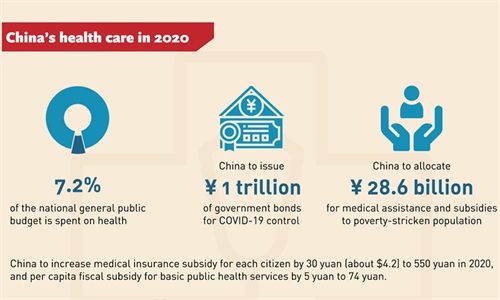Patients expected to pay $4.7 billion less on drugs in revised national healthcare system

A villager rides an electric motor in the Caiqutang relocation village in Yangbajain Township, Damxung County, southwest China's Tibet Autonomous Region, Aug. 2, 2020. Relocation for poverty-relief purposes carried out in recent years has helped boost rural revitalization in Tibet Autonomous Region. For instance, the Caiqutang relocation village, which saw its first resettlers in late 2017, now offers better utilities and health care to 683 inhabitants who moved from less amiable alpine areas. The relocated residents are also allotted dividends from Yangbajain's hot-spring tourism revenue. Some have joined agricultural collectives which provide job opportunities with decent income. Photo:Xinhua
China on Friday announced a new medicine list for 2022 under its medical insurance system on Friday, with 74 new drugs added to the list. Sixty-seven drugs not included in the list will enjoy negotiated prices, with an average price cut of 61.71 percent, including drugs for COVID-19 treatment.
The total number of medicines listed in the national medical insurance drug list is 2,860, including 1,486 western medicines and 1,374 Chinese proprietary medicines. The new list will take effect on January 1, 2022, according to a notice published by the National Healthcare Security Administration (NHSA) on Friday.
The newly included drugs cover 21 clinical groups and benefit a wide range of patients, including those for tumors, chronic diseases, infections and rare diseases.
With four products included on the list, Janssen, the pharmaceutical company of Johnson & Johnson, was the champion among foreign-owned medical companies. Pfizer has three products included, while Sanofi has two.
Drugs not listed will enjoy a negotiated price also covering 21 clinical groups, including 20 drugs for chronic diseases such as hypertension, diabetes, hyperlipidemia and psychosis, 15 drugs for anti-infection-related diseases such as AIDS, seven for rare diseases, and two for COVID-19 treatment.

Photo:VCG
The NHSA has conducted six batches of massive drug procurements in the past years, and the negotiated prices of selected drugs dropped by an average of 53 percent.
Compared with the original market prices, the negotiated prices are expected to reduce the burden on patients by more than 30 billion yuan ($4.7 billion) in 2022 through the national medical insurance system, said NHSA.
China's basic medical insurance network covers more than 95 percent of its population - about 1.36 billion - during the 13th Five-Year Plan period (2016-20), which is the world's largest.
In September, China has adopted the 14th Five-Year Plan (2021-25) for National Medical Security and made arrangements on improving the medical insurance system to better meet people's needs for medical services and drugs, the Xinhua News Agency reported.
China vowed to implement the plan for universal coverage of medical insurance by 2025 amid a new round of medical reform. The multi-tiered medical insurance system is required to improve and support policies for medical insurance, and will be refined in a category-based manner.
Global Times


